Balkinization
an unanticipated consequence of
Jack M. Balkin
Balkinization Symposiums: A Continuing List
E-mail:
Jack Balkin:
jackbalkin at yahoo.com
Bruce Ackerman
bruce.ackerman at yale.edu
Ian Ayres
ian.ayres at yale.edu
Corey Brettschneider
corey_brettschneider at brown.edu
Mary Dudziak
mary.l.dudziak at emory.edu
Joey Fishkin
joey.fishkin at gmail.com
Heather Gerken heather.gerken at yale.edu
Abbe Gluck abbe.gluck at yale.edu
Mark Graber
mgraber at law.umaryland.edu
Stephen Griffin
sgriffin at tulane.edu
Jonathan Hafetz
jonathan.hafetz at shu.edu
Jeremy Kessler
jkessler at law.columbia.edu
Andrew Koppelman
akoppelman at law.northwestern.edu
Marty Lederman
msl46 at law.georgetown.edu
Sanford Levinson
slevinson at law.utexas.edu
David Luban
david.luban at gmail.com
Gerard Magliocca
gmaglioc at iupui.edu
Jason Mazzone
mazzonej at illinois.edu
Linda McClain
lmcclain at bu.edu
John Mikhail
mikhail at law.georgetown.edu
Frank Pasquale
pasquale.frank at gmail.com
Nate Persily
npersily at gmail.com
Michael Stokes Paulsen
michaelstokespaulsen at gmail.com
Deborah Pearlstein
dpearlst at yu.edu
Rick Pildes
rick.pildes at nyu.edu
David Pozen
dpozen at law.columbia.edu
Richard Primus
raprimus at umich.edu
K. Sabeel Rahmansabeel.rahman at brooklaw.edu
Alice Ristroph
alice.ristroph at shu.edu
Neil Siegel
siegel at law.duke.edu
David Super
david.super at law.georgetown.edu
Brian Tamanaha
btamanaha at wulaw.wustl.edu
Nelson Tebbe
nelson.tebbe at brooklaw.edu
Mark Tushnet
mtushnet at law.harvard.edu
Adam Winkler
winkler at ucla.edu
Compendium of posts on Hobby Lobby and related cases
The Anti-Torture Memos: Balkinization Posts on Torture, Interrogation, Detention, War Powers, and OLC
The Anti-Torture Memos (arranged by topic)
Recent Posts
The Rise of Identitarian Legalism and the Workplace as a Site of Resistance to Authoritarianism
Just A Few Blogs
ACS Blog
Alas, a Blog
Althouse
Arts and Letters Daily
Atrios (Eschaton)
Bill of Health
Buzzflash.com
Buzz Machine
Cato at Liberty
Juan Cole (Informed Comment)
Concurring Opinions
The Constitution in 2020
Corrente
Crooked Timber
Daily Howler
Daily Kos
Dana Boyd
Brad DeLong
Digby (Hullabaloo)
Discriminations
Daniel Drezner
Kevin Drum (Mother Jones)
Electrolite
En Banc
Eunomia (Daniel Larison)
Fafblog
Michael Froomkin (Discourse.net)
GovLab (Beth Noveck)
Rick Hasen (Election Law)
History News Network
How Appealing
Ignatz (Sam Heldman)
The Importance of (Ernie Miller)
Infolaw
Instapundit
International Economic Law and Policy Blog
IntLawGrrls
Jacob Levy
Jesus' General
Jurisdynamics
The Kitchen Cabinet
Mark Kleiman
Law Blog Central
Larry Lessig
Lawyers, Guns and Money
Liberal Oasis
Brian Leiter's Law School Reports
The Leiter Reports
Marginal Revolution
Megan McArdle
Memeorandum
Metafilter
Mirror of Justice
The New Republic
Newseum
No More Mister Nice Blog
Brendan Nyhan
Opinio Juris
Orcinus
The Originalism Blog
Pandagon
Passport (Foreign Policy)
Overcoming Bias
Political Animal (Washington Monthly)
Political Theory Daily Review
Political Wire (Taegan Goddard)
The Poor Man
Virginia Postrel
Prawfsblawg
Public Reason
Jonathan Rauch
Raw Story
Redstate
ReligiousLeftLaw.com
Reporters Committee For Freedom of the Press
Reproductive Rights Blog
Rothman's Roadmap to the Right of Publicity
SCOTUS Blog
Seeing the Forest
Clay Shirky
The Shifted Librarian
The Situationist
Larry Solum (Legal Theory)
Andrew Sullivan
Talking Points Memo
Talk Left
Tapped
Tbogg
TechPresident
The Paper Chase (Jurist)
Tom Paine
Tom Tomorrow (This Modern World)
Eve Tushnet
Uggabugga
University of Chicago Law School Faculty Blog
Unqualified Offerings
The Volokh Conspiracy
War and Piece (Laura Rozen)
Wampum
Oliver Willis
Wonkette
Written Description
Matthew Yglesias
Yin
Your Choice of Feeds
1. XML
powered by
2. Atom Feed
3. RSS 2.0
The Rise of Identitarian Legalism and the Workplace as a Site of Resistance to Authoritarianism
Guest Blogger
For the Balkinization symposium on Free Speech in Crisis and the Limits of the First Amendment. Amanda
Shanor In the early days of the second Trump Administration, attacks on civil
rights laws and initiatives with any egalitarian cast reached a fever pitch. In his second day in office, President Trump
signed an executive order condemning the diversity, equity, and inclusion
practices of “major
corporations, financial institutions, the medical industry, … and institutions
of higher education,” among others. It
canceled a host of prior executive orders aimed at preventing discrimination or
advancing inclusion, including in governmental hiring and contracting. It ordered the Attorney General, with the
Director of OMB, to identify “key sectors of concern” and identify, in each
sector, “up to nine” publicly traded corporations, large non-profit
corporations or associations,” foundations, bar and medical associations, and
institutions of higher education for investigation. In the weeks and months since, the
Administration has canceled grants and scrubbed governmental websites and buildings
of a range of prohibited concepts and terms—from purging mention of the
contribution of Navajo code talkers in WWII to the taking down of “respect”
from the lobby wall of an intelligence agency to abandoning medical and
scientific research investigating group level concerns to “deleting” entire
agencies advancing social goods. These attacks, if now a flood, have been building for several decades. A
coalition of business, libertarian, and religious interests have pursued a
litigation agenda aimed at destroying labor and civil rights laws either
by rendering them unconstitutional or subjecting them to constitutionally
protected opt-out. At core, these cases comprise the
conservative legal movement’s increasingly successful multifront war against
progressive power building. Vice President JD Vance captured this idea in a 2021 interview: The Administration and larger conservative legal movement has largely advanced
this agenda by leveraging law and liberal constitutionalism, and its
cornerstone rights—the freedom of speech, association, and religion—to
undermine democratic participation and power in civic institutions including
workplaces and educational institutions.
While cases about public LGBTQ+ access to public
accommodations have recently been a central (and sometimes distracting) focus
of this push, the big-ticket aim of in this war is a one-two punch of killing
first labor law and then antidiscrimination laws at work and in schools. Most of the current cases involve the
conservative Christian legal movement and its leading litigation group, the
Alliance Defending Freedom. But while there may currently be few secular
businesses interested in constitutional op-outs to public accommodations laws,
massive employers like Walmart, faced with a potentially expensive Title VII
suit, are likely to feel pressure to utilize and expand on any constitutional
doctrines created by faith-based employers.
The result would likely toll the end of antidiscrimination laws at work
and a sharply antiegalitarian shift in American society and economy. I had originally planned to write my short
contribution on those trends, including what to make of the fact that the conservative Christian legal movement
has increasingly brought association (not only speech or religion) based claims
against civil rights laws; how those claims fit into the broader
attacks on labor and employment antidiscrimination laws; and how should we theorize rights to
association in the contemporary workplaces. In light of the recent broader attacks on the
freedom of expression, the rule of law, and American democracy, however, I want
to focus here on the way that workplaces have long been and may in this moment
become key sites of resistance to autocracy, how the aforementioned fights over
civil rights and participation at work and in universities (largely under
Titles VI, VII, and IX of the Civil Rights Act of 1964) may create exploitable cracks in the coalition
advocating illiberalism, and how a key lesson about how to deal with collective
action problems learned by the labor movement may offer vital practical insight
today. I will start with the coalitional fractures that the Trump
Administration’s approach to the intersection of civil rights laws and free
expression may prompt. These cracks stem
from the recent and fundamental shift in the center of gravity of the
conservative legal movement. The Reagan
revolution fostered a muscular libertarian, deregulatory, and often formalist,
anti-classificatory view of the First Amendment. The courts largely took up that
constitutional view over several decades and weaponized it against economic regulation in general and labor laws in particular.
As recent attacks on “wokeness” in the private sector and the
aforementioned order to investigate and target industry leaders engaged in
forbidden DEI crystalize, however, the conservative legal movement is undergoing a transformation from libertarian and business-friendly
politics and legal advocacy toward polarized identitarianism. This shift has created deep contradictions in the civil rights related claims
of conservative advocates and potential cracks in their coalition. At once, one wing of conservatives has successfully pushed the courts to prohibit educational institutions
from pursuing race-conscious admissions through the adoption of a Reagan-era-developed
anti-classificatory view of equal protection, and, on the other, religious
conservatives have pushed for the recognition of a First Amendment right of schools
to refuse to enroll students in state-funded preschools because they or their families are
LGBT (and of businesses to refuse to serve gay couples in industries such as cakes and websites). Similarly, tensions are mounting between conservative strategies
regarding the meaning and enforcement of the anti-harassment provisions of equality
laws in higher education, which has clear implications for the same principles
in workplaces. The Trump Administration has aggressively moved to strip the
federal research funds of universities, including Harvard and Columbia, on the basis that they failed to do enough to combat antisemitism,
including harassment of Jewish students, as required by the antidiscrimination
mandates of the Civil Rights Act. At the same time, other conservatives have been fighting to establish First Amendment rights
against related Civil Rights Act provisions that prohibit harassment on the
basis of sex that is so aggressive that it functionally excludes a student from
educational opportunities. We
might argue that this is hypocrisy, not a tension; the fundamental point of identitarian
and autocratic
legalism is to use law to advance the interests of certain people, groups,
identities, and ideologies above all others, even if in contradictory ways. To be sure, while a majority of the Supreme
Court appears devoted to a Reagan-era-inspired anti-classificatory
approach to race
discrimination and speech, it
has been far
from committed to robust protections against sex
discrimination, including with regard to LGBT people. This may align with the
goals of the conservative Christian legal movement, which appear to be the end
of all sex-role-related civil rights protections, particularly with regard to
LGBT people—including in workplaces,
public accommodations, and educational institutions. It is
telling, however, that the Administration has sought to weaponize not only
equality law against its opponents, but equality rhetoric as well. A
central trope of the opening of the second Trump Administration has been the
President’s allegations that its opponents are discriminating, violating civil
rights laws, and failing to protect women and Jewish people in particular. In
work with Serena Mayeri, I explore the ways in which equality law and language
are being used to undermine both equality and democracy. But what is important
here is that equality and its language continue to hold sufficient resonance
with the American public that the President uses those ideas both to begin with
and with much success. Certainly, reasonable people can and do differ about how
to define and realize shared values of equal opportunity, free speech,
and religious exercise. The tensions noted above suggest differences of opinion
between important segments of the Trump coalition. To the degree that the
courts, strands of the conservative movement, or the broader public observe partisan
or inequitable governmental actions that deviate from how they believe constitutional
values of equality and freedom should be cashed out—as the courts have concluded
in the context of many
challenges to the President’s actions in the name of equality—this may fracture
the coalition that brought Trump to power. This moment of crisis should further prompt us to reflect on the reason
that workplaces have for so long been the situs of conflict: they are a key
site of not only democratic power building but also of resistance to
authoritarianism. In a capitalist democracy, the building of
collective economic power, solidary and civic participation, and
knowledge—which sociologically depend on workplaces and schools—is necessary to
ensure against oligarchic consolidation of wealth and power and its apex,
kleptocratic authoritarianism. It is for this reason that antidemocratic efforts have placed such a high
priority not only on destroying labor organizing but also laws that ensure
pluralistic access to economic participation—that is, antidiscrimination laws
at work and in consumer life. Some have argued that a tension exists between building economic power
and forging class identity, on the one hand, and advancing diversity on the
other, or at least observed that race, sex, and other identities can be
leveraged to divide groups that might otherwise find common economic cause. These
tensions ultimately tore apart the New Deal coalition. The New Deal was formed
in a tenuous moment in U.S. race relations. Its coalition, and the economic
democracy it advanced, depended at once on southern democrats whose power hung
on the exclusion of Black Americans and on the movement of African American
voters from the party of Lincoln to FDR’s New Dealers in the 1930s. That
tension can be seen in the contrast of the CIO’s organizing of a multiracial
workers movement in the North while the National Labor Relations Act and Fair
Labor Standards Act excluded, at the demand of Southern democrats, both
farmworker and domestic workers—that is, the occupations nearly exclusively
held by African American workers in the South—from the right to organize and
wage and hour protections. As Jefferson
Cowie has observed, quoting Ira Katznelson: “The
tragedy and the irony of the New Deal was how such an advance in economic
democracy required compromise with ‘the most violent and illiberal part of the
political system.” The reason why the South fought against the right to organize and wage
and hour protections for farmworkers and domestic workers, as well as to
preserve racially discriminatory employment practices more broadly, speaks to
the recognition that workplaces are critical sites of democratic participation
that may create alternate centers of power and solidarity. Taking a broader historical and geographic view illuminates how workplaces,
like universities, have long been sites of resistance to autocracy and oligarchy.
As Ada Ferrer captures, Journalist Ruby Hart Philips wrote
in her diary on August 3, 1933, that in politics, “small things sometimes grow
into big things.” She was describing how
a strike of Havana bus drivers spread to truck drivers, garbage collectors,
stores, and even newspapers, paralyzing the city. “Soon the ‘little’ bus
drivers’ strike was a general strike, active in every province of the island
and nearly every sector of the economy.”
That general strike grew into a force that toppled would-be Cuban dictator
Gerardo Machado, who served as the despotic President of Cuba from 1925 to 1933—but
after 1928 only by modifying the Cuban constitution to stay in power. The anti-authoritarian Solidarity
Movement in Poland in the 1980s similarly spread from a labor strike to a
broader political movement that eventually led to the fall of the communist
government in Poland. And anticolonial general strikes spurred the fall of many colonial occupations, including in Jamaica, Ghana, Kenya,
and Algeria. While labor’s power in the U.S. is at a deep low, Trump’s unprecedented
assault on American democracy and constitutionalism has begun to foster a
broad-based movement of workers across the federal government. Trump’s shock to
American institutions, and the economic turmoil it appears to be creating, may
counterintuitively prompt Americans who have been complacent during the long
period of relative stability and prosperity since World War II to take action. We need more research into, and dissemination of, strategies and tactics
that have been successfully used to defend democracy against would-be
autocratic leaders both globally and across time. In this regard, the U.S. labor
movement has a key organizing lesson that it can share with other institutions
under attack, including universities, law firms, and the business community. Leaders
of many powerful institutions have been seemingly paralyzed by the
flood-the-zone start of the second Trump Administration. Many leaders and those counseling them, such
as corporate and university general counsel, are taking a heads-down approach,
attempting to hide, hoping that they will avoid the Administration’s
attacks. It is as if all potential
alternate centers of power believe they are in a forest with a hungry bear and
need only outrun the other guy. But the
history of fascism suggests that the Paul Weisses and Columbias may just be the
beginning, and that early collective action is necessary to prevent sometimes
rapid democratic backsliding from a government of laws into one of men. Labor has dealt with such complicated collective action problems before. The
property service union, SEIU 32BJ, for example, faced a significant prisoners
dilemma while trying to organize in New York: if it organized one property
services company, that employer would be at a competitive disadvantage to
others and might fold, creating a problem of whack-a-mole. It therefore developed a strategy: A labor contract would not go into force
until a certain percentage of employers in a market signed on. That approach lessened the risk a given
employer would face by agreeing to union demands. This insight is a critical one for not only
labor but major universities, businesses, and law firms to recognize. Pro-democracy organizers should seek to have major
institutions agree to resist authoritarian pressures that threaten First
Amendment freedoms, including association, free speech, academic freedom—but
jointly, rather than individually. If there is a key lesson that workplaces and the crisis of free speech have
for our current moment, it is that through collective action can “small things”
“grow into big” ones. Amanda Shanor
is Assistant Professor & Wolpow Family Faculty Scholar, the Wharton School
of the University of Pennsylvania. You can reach her by e-mail at shanor@law.upenn.edu.We should seize the institutions
of the left and turn them against the left. We need a de-Baathification
program, a dewokeification program. Basically my strategy is to
deinstitutionalize the left, reinstitutionalize the right. It’s very hard. It
will require men and women of incredible courage. But I don’t see another way
out.
Posted
9:30 AM
by Guest Blogger [link]
Books by Balkinization Bloggers

Linda C. McClain and Aziza Ahmed, The Routledge Companion to Gender and COVID-19 (Routledge, 2024)

David Pozen, The Constitution of the War on Drugs (Oxford University Press, 2024)

Jack M. Balkin, Memory and Authority: The Uses of History in Constitutional Interpretation (Yale University Press, 2024)
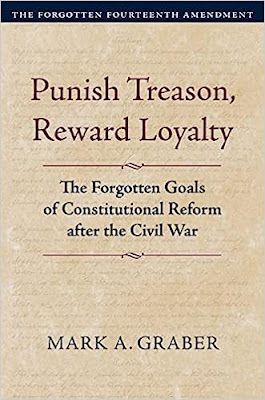
Mark A. Graber, Punish Treason, Reward Loyalty: The Forgotten Goals of Constitutional Reform after the Civil War (University of Kansas Press, 2023)
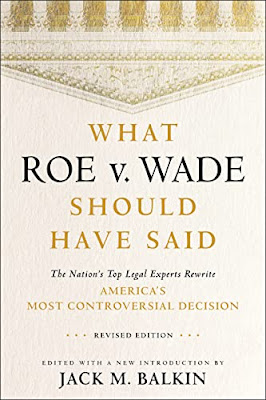
Jack M. Balkin, What Roe v. Wade Should Have Said: The Nation's Top Legal Experts Rewrite America's Most Controversial Decision - Revised Edition (NYU Press, 2023)

Andrew Koppelman, Burning Down the House: How Libertarian Philosophy Was Corrupted by Delusion and Greed (St. Martin’s Press, 2022)

Gerard N. Magliocca, Washington's Heir: The Life of Justice Bushrod Washington (Oxford University Press, 2022)
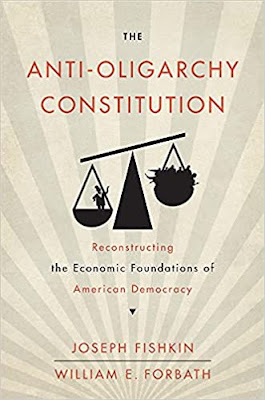
Joseph Fishkin and William E. Forbath, The Anti-Oligarchy Constitution: Reconstructing the Economic Foundations of American Democracy (Harvard University Press, 2022)
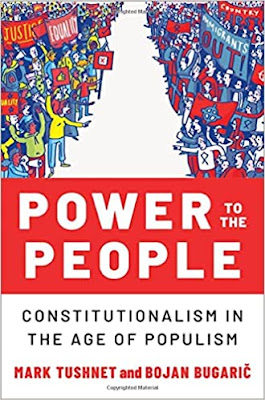
Mark Tushnet and Bojan Bugaric, Power to the People: Constitutionalism in the Age of Populism (Oxford University Press 2021).

Mark Philip Bradley and Mary L. Dudziak, eds., Making the Forever War: Marilyn B. Young on the Culture and Politics of American Militarism Culture and Politics in the Cold War and Beyond (University of Massachusetts Press, 2021).

Jack M. Balkin, What Obergefell v. Hodges Should Have Said: The Nation's Top Legal Experts Rewrite America's Same-Sex Marriage Decision (Yale University Press, 2020)

Frank Pasquale, New Laws of Robotics: Defending Human Expertise in the Age of AI (Belknap Press, 2020)

Jack M. Balkin, The Cycles of Constitutional Time (Oxford University Press, 2020)

Mark Tushnet, Taking Back the Constitution: Activist Judges and the Next Age of American Law (Yale University Press 2020).

Andrew Koppelman, Gay Rights vs. Religious Liberty?: The Unnecessary Conflict (Oxford University Press, 2020)

Ezekiel J Emanuel and Abbe R. Gluck, The Trillion Dollar Revolution: How the Affordable Care Act Transformed Politics, Law, and Health Care in America (PublicAffairs, 2020)

Linda C. McClain, Who's the Bigot?: Learning from Conflicts over Marriage and Civil Rights Law (Oxford University Press, 2020)
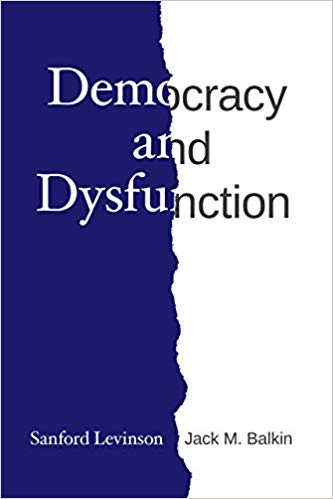
Sanford Levinson and Jack M. Balkin, Democracy and Dysfunction (University of Chicago Press, 2019)

Sanford Levinson, Written in Stone: Public Monuments in Changing Societies (Duke University Press 2018)

Mark A. Graber, Sanford Levinson, and Mark Tushnet, eds., Constitutional Democracy in Crisis? (Oxford University Press 2018)

Gerard Magliocca, The Heart of the Constitution: How the Bill of Rights became the Bill of Rights (Oxford University Press, 2018)

Cynthia Levinson and Sanford Levinson, Fault Lines in the Constitution: The Framers, Their Fights, and the Flaws that Affect Us Today (Peachtree Publishers, 2017)

Brian Z. Tamanaha, A Realistic Theory of Law (Cambridge University Press 2017)

Sanford Levinson, Nullification and Secession in Modern Constitutional Thought (University Press of Kansas 2016)

Sanford Levinson, An Argument Open to All: Reading The Federalist in the 21st Century (Yale University Press 2015)

Stephen M. Griffin, Broken Trust: Dysfunctional Government and Constitutional Reform (University Press of Kansas, 2015)

Frank Pasquale, The Black Box Society: The Secret Algorithms That Control Money and Information (Harvard University Press, 2015)

Bruce Ackerman, We the People, Volume 3: The Civil Rights Revolution (Harvard University Press, 2014)
Balkinization Symposium on We the People, Volume 3: The Civil Rights Revolution

Joseph Fishkin, Bottlenecks: A New Theory of Equal Opportunity (Oxford University Press, 2014)

Mark A. Graber, A New Introduction to American Constitutionalism (Oxford University Press, 2013)

John Mikhail, Elements of Moral Cognition: Rawls' Linguistic Analogy and the Cognitive Science of Moral and Legal Judgment (Cambridge University Press, 2013)

Gerard N. Magliocca, American Founding Son: John Bingham and the Invention of the Fourteenth Amendment (New York University Press, 2013)

Stephen M. Griffin, Long Wars and the Constitution (Harvard University Press, 2013)

Andrew Koppelman, The Tough Luck Constitution and the Assault on Health Care Reform (Oxford University Press, 2013)

James E. Fleming and Linda C. McClain, Ordered Liberty: Rights, Responsibilities, and Virtues (Harvard University Press, 2013)
Balkinization Symposium on Ordered Liberty: Rights, Responsibilities, and Virtues

Andrew Koppelman, Defending American Religious Neutrality (Harvard University Press, 2013)

Brian Z. Tamanaha, Failing Law Schools (University of Chicago Press, 2012)

Sanford Levinson, Framed: America's 51 Constitutions and the Crisis of Governance (Oxford University Press, 2012)

Linda C. McClain and Joanna L. Grossman, Gender Equality: Dimensions of Women's Equal Citizenship (Cambridge University Press, 2012)

Mary Dudziak, War Time: An Idea, Its History, Its Consequences (Oxford University Press, 2012)

Jack M. Balkin, Living Originalism (Harvard University Press, 2011)

Jason Mazzone, Copyfraud and Other Abuses of Intellectual Property Law (Stanford University Press, 2011)

Richard W. Garnett and Andrew Koppelman, First Amendment Stories, (Foundation Press 2011)

Jack M. Balkin, Constitutional Redemption: Political Faith in an Unjust World (Harvard University Press, 2011)

Gerard Magliocca, The Tragedy of William Jennings Bryan: Constitutional Law and the Politics of Backlash (Yale University Press, 2011)

Bernard Harcourt, The Illusion of Free Markets: Punishment and the Myth of Natural Order (Harvard University Press, 2010)

Bruce Ackerman, The Decline and Fall of the American Republic (Harvard University Press, 2010)
Balkinization Symposium on The Decline and Fall of the American Republic

Ian Ayres. Carrots and Sticks: Unlock the Power of Incentives to Get Things Done (Bantam Books, 2010)

Mark Tushnet, Why the Constitution Matters (Yale University Press 2010)
Ian Ayres and Barry Nalebuff: Lifecycle Investing: A New, Safe, and Audacious Way to Improve the Performance of Your Retirement Portfolio (Basic Books, 2010)
.jpg)
Jack M. Balkin, The Laws of Change: I Ching and the Philosophy of Life (2d Edition, Sybil Creek Press 2009)

Brian Z. Tamanaha, Beyond the Formalist-Realist Divide: The Role of Politics in Judging (Princeton University Press 2009)
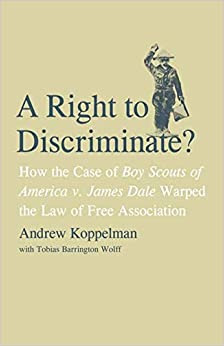
Andrew Koppelman and Tobias Barrington Wolff, A Right to Discriminate?: How the Case of Boy Scouts of America v. James Dale Warped the Law of Free Association (Yale University Press 2009)

Jack M. Balkin and Reva B. Siegel, The Constitution in 2020 (Oxford University Press 2009)
Heather K. Gerken, The Democracy Index: Why Our Election System Is Failing and How to Fix It (Princeton University Press 2009)

Mary Dudziak, Exporting American Dreams: Thurgood Marshall's African Journey (Oxford University Press 2008)

David Luban, Legal Ethics and Human Dignity (Cambridge Univ. Press 2007)

Ian Ayres, Super Crunchers: Why Thinking-By-Numbers is the New Way to be Smart (Bantam 2007)

Jack M. Balkin, James Grimmelmann, Eddan Katz, Nimrod Kozlovski, Shlomit Wagman and Tal Zarsky, eds., Cybercrime: Digital Cops in a Networked Environment (N.Y.U. Press 2007)
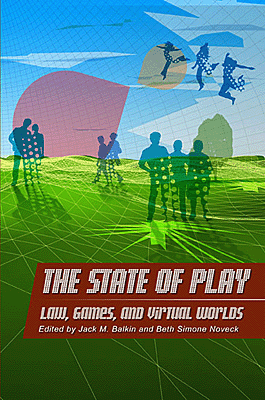
Jack M. Balkin and Beth Simone Noveck, The State of Play: Law, Games, and Virtual Worlds (N.Y.U. Press 2006)

Andrew Koppelman, Same Sex, Different States: When Same-Sex Marriages Cross State Lines (Yale University Press 2006)
Brian Tamanaha, Law as a Means to an End (Cambridge University Press 2006)
Sanford Levinson, Our Undemocratic Constitution (Oxford University Press 2006)
Mark Graber, Dred Scott and the Problem of Constitutional Evil (Cambridge University Press 2006)
Jack M. Balkin, ed., What Roe v. Wade Should Have Said (N.Y.U. Press 2005)
Sanford Levinson, ed., Torture: A Collection (Oxford University Press 2004)
Balkin.com homepage
Bibliography
Conlaw.net
Cultural Software
Writings
Opeds
The Information Society Project
BrownvBoard.com
Useful Links
Syllabi and Exams